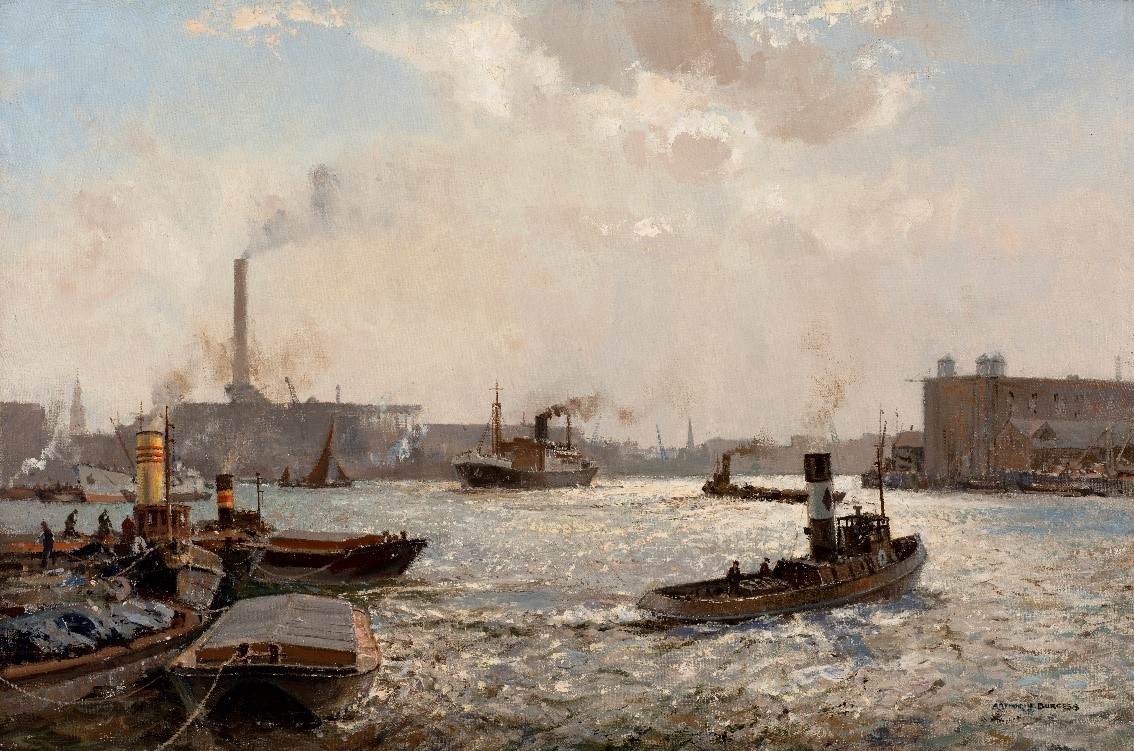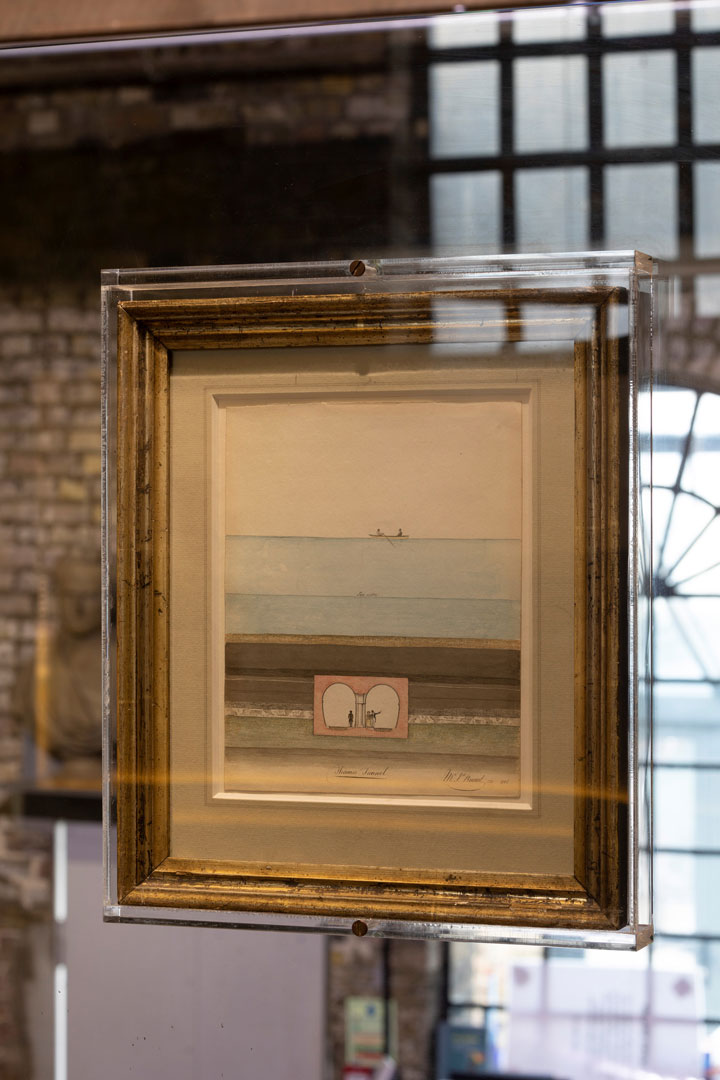Blog
Katherine McAlpine, Director of the Brunel Museum
Visitors to Rotherhithe, whether they are motivated museum goers, Rotherhithe residents or just passing through via the Thames Path, can now get a glimpse of what this area looked like over 75 years ago. Outside the Brunel Museum on an unprepossessing planter is a reproduction of Arthur Burgess’ ‘Lower Thames and Limehouse’. The oil painting shows dock workers bobbing along the Thames shifting precious cargo during the Second World War.


